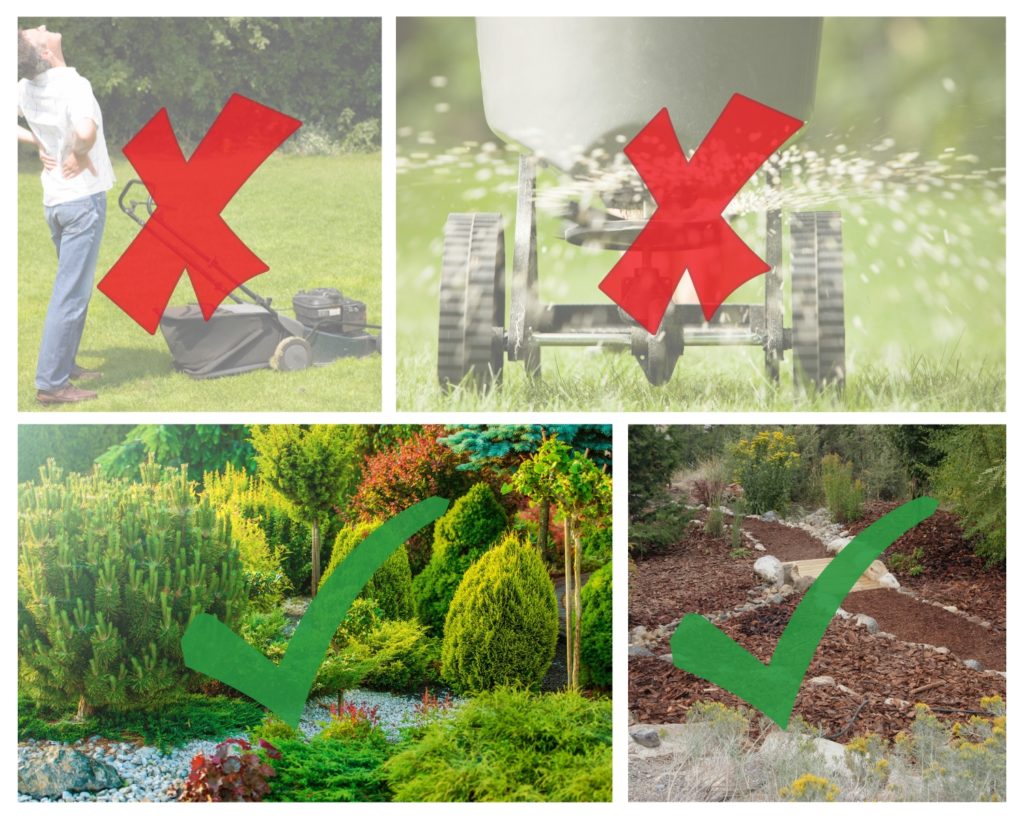
Looking for more sustainable and eco-friendly ways to enhance your outdoor space? Consider exploring lawn alternatives – visually appealing options that reduce the need for time, effort, and resources compared to traditional grass lawns. In recent years, more and more homeowners and garden enthusiasts have been turning to lawn alternatives as a means of promoting environmental conservation while creating unique and innovative landscapes. In this article, we’ll explore some exciting and practical lawn alternative ideas to help reduce your ecological footprint and transform your outdoor space.
The desire for alternatives to grass lawns stems from a growing awareness of the environmental issues surrounding their upkeep, such as excessive water consumption, heavy reliance on chemical fertilizers and pesticides, and limited biodiversity. Additionally, traditional lawns can be labor-intensive, requiring regular mowing, watering, and weeding. Homeowners can create beautiful, low-maintenance outdoor spaces with alternative ground covers. These choices support healthy ecosystems and contribute to a greener future.
We’ll introduce various options for replacing or complementing grass lawns. These alternatives cater to different preferences and needs. Various ground covers, artificial grass, xeriscaping, and native plant landscapes are available. These options suit different climates, preferences, and needs. Join us as we explore these alternatives and provide valuable insights on how to select, install, and maintain them, all while creating a visually stunning and environmentally conscious outdoor haven.
The Problem with Traditional Grass Lawns

Problems with Traditional Grass Lawns
Traditional grass lawns may look lush and inviting, but they come with a myriad of problems that are often overlooked. As homeowners become more environmentally conscious, the true impact of maintaining a perfectly manicured lawn is coming to light. The resources required to maintain a traditional grass lawn can be staggering, from the large amounts of water needed to keep it green to the chemicals used to fight off pests and weeds. In this section, we will explore the challenges posed by traditional grass lawns and the reasons why many are seeking alternatives.
Excessive Water Use
One of the primary issues with conventional lawns is the excessive water consumption. According to the EPA, roughly one-third of residential water use in the United States goes towards lawn irrigation, accounting for millions of gallons of water every day. This can put a significant strain on local water supplies, especially in areas experiencing drought conditions or where water is scarce. Furthermore, the overuse of water can lead to runoff, which carries fertilizers and pesticides into nearby bodies of water, creating a host of environmental issues.
Harmful Chemicals
Another concern with traditional lawns is the reliance on harmful chemicals for maintenance. Fertilizers, herbicides, and pesticides are regularly applied to lawns to promote growth and combat weeds and pests. However, these chemicals can pose risks to both human health and the environment. They can contaminate water sources, harm beneficial insects and wildlife, and even impact the health of pets and family members. Additionally, the emissions produced by gas-powered lawn equipment contribute to air pollution and climate change.
Lack of Biodiversity
Lastly, the homogeneity of traditional grass lawns can lead to a reduction in biodiversity. A vast expanse of a single grass species does not provide the variety of habitats needed to support a diverse range of insects, birds, and other wildlife. This lack of diversity can contribute to the decline of pollinator populations and disrupt local ecosystems. In light of these issues, many homeowners are seeking eco-friendly alternatives that not only reduce the environmental impact but also create more interesting and diverse landscapes in their outdoor spaces.
Ground Covers as an Alternative
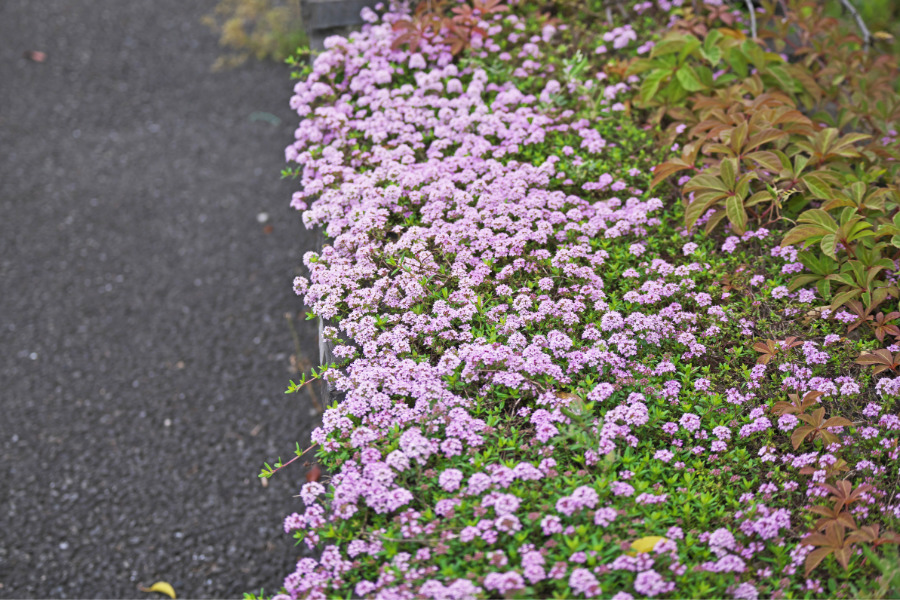
One popular alternative to traditional grass lawns is the use of ground covers. Ground covers are low-growing plants that spread to form a dense mat. They effectively cover the soil and are a low-maintenance substitute for grass. These plants offer diverse colors, textures, and growth habits. Homeowners can create a unique, visually appealing landscape. In this section, we will discuss the benefits of ground covers and provide some examples of excellent choices for various climates and conditions.
Minimal Maintenance
The primary advantage of ground covers is their minimal maintenance requirements compared to conventional grass lawns. They often require less watering, little to no mowing, and reduced or no need for chemical treatments. This translates to significant time and cost savings for homeowners and a reduced environmental impact. Additionally, ground covers can provide valuable ecosystem services by supporting pollinators, providing habitat for wildlife, and preventing soil erosion.
Popular Ground Cover Options
A popular ground cover option is creeping thyme (Thymus serpyllum). This hardy, drought-tolerant plant creates a dense mat of tiny, fragrant leaves. Delicate purple flowers attract bees and other pollinators. Creeping thyme can withstand light foot traffic, making it an excellent choice for walkways or play areas. Sweet alyssum (Lobularia maritima) is a low-growing, flowering ground cover with fragrant white or purple flowers. Creeping phlox (Phlox subulata) is also low-growing and known for its vibrant spring blooms in pink, purple, and white.
For those seeking a more lush and tropical look, consider using ground covers such as Liriope spicata, commonly known as creeping lilyturf, or the evergreen Pachysandra terminalis, also known as Japanese spurge. Both of these plants are shade-tolerant and form dense, attractive mats of foliage. One option for shady areas is the native North American plant, Mitchella repens or partridgeberry. It has small, glossy leaves and produces red berries, providing food for wildlife.
Climate and Growing Conditions
When selecting ground covers for your alternative lawn, it’s essential to choose plants that are well-suited to your local climate and growing conditions. Ensure your new ground cover thrives with minimal intervention. This creates a beautiful, low-maintenance, and eco-friendly alternative to traditional grass lawns. Consult with local garden centers or extension services to find the best options for your specific region and landscape.
Artificial Grass

Another alternative to traditional grass lawns is the installation of artificial grass. Artificial grass is also known as synthetic turf. Modern versions closely resemble natural grass in appearance and texture. This option appeals to those in areas with water restrictions. It offers a consistently green, manicured look without natural lawn maintenance. In this section, we will discuss the benefits and drawbacks of artificial grass and considerations for homeowners who may be interested in this option.
Low Maintenance
One of the primary benefits of artificial grass is its low maintenance requirements. Unlike natural lawns, artificial grass does not need watering, mowing, fertilizing, or pesticide applications. This can save homeowners both time and money and reduce the environmental impact associated with lawn maintenance. Artificial grass is also highly durable and can withstand heavy foot traffic, making it an excellent choice for areas with frequent use, such as sports fields or dog runs.
Drawbacks
However, there are some drawbacks to consider when opting for artificial grass. First, the initial cost of installation can be significantly higher than that of establishing a natural lawn. Additionally, while modern artificial grass is made to be more environmentally friendly than older versions, it is still a petroleum-based product, and its production and disposal can have environmental implications. Furthermore, artificial grass does not provide the same ecosystem services as natural lawns, such as supporting pollinators and improving soil health.
Benefits vs. Concerns
When considering artificial grass as an alternative to a traditional lawn, it’s essential to weigh the benefits and drawbacks and assess whether this option aligns with your values, lifestyle, and budget. For some homeowners, low maintenance and consistent appearance are key. These benefits may outweigh environmental concerns and upfront costs. However, for those who value the ecological benefits and natural beauty of a living landscape, other alternatives, such as ground covers or native plantings, may be a more suitable choice.
Xeriscaping

Xeriscaping is a landscaping approach that emphasizes water conservation by using drought-tolerant plants and efficient irrigation techniques. This alternative is suitable for regions with limited water resources. It’s ideal for homeowners aiming to reduce water usage and create a sustainable landscape. Xeriscaping not only conserves water but also reduces maintenance requirements and supports local biodiversity. In this section, we will explore the principles of xeriscaping, its benefits, and how to create a xeriscaped lawn.
Core Principles
The core principles of xeriscaping include selecting native and drought-tolerant plants. Using water-efficient irrigation methods, grouping plants with similar water needs together, and incorporating mulch to conserve soil moisture are also important. Homeowners can create a lush, vibrant landscape using these principles. This landscape requires significantly less water than traditional grass lawns. Additionally, xeriscaping often involves the use of hardscaping elements, such as paths, patios, and rock gardens, which further reduce water usage and add visual interest to the landscape.
Saving Water
One of the main benefits of xeriscaping is its water-saving potential. Traditional grass lawns need significant water for maintenance. Xeriscaped landscapes can use up to 50% less water. This not only reduces water bills but also lessens the strain on local water resources. Additionally, xeriscaping can save time and money by reducing maintenance tasks such as mowing, fertilizing, and applying pesticides.
Local Biodiversity
Another benefit of xeriscaping is its ability to support local biodiversity. By incorporating native plants into the landscape, xeriscaping can provide essential habitat and food sources for pollinators, birds, and other wildlife. This not only contributes to a healthier ecosystem but can also create a more dynamic and visually appealing landscape.
Get Started
To create a xeriscaped lawn, start by assessing your site’s conditions, such as soil type, sun exposure, and drainage patterns. Next, research native and drought-tolerant plants that are suitable for your area and select a diverse mix of species with varying heights, textures, and bloom times. Finally, design your landscape with water-efficient irrigation, like drip systems or soaker hoses. Incorporate mulch and hardscaping elements to conserve water and create a visually cohesive space. With careful planning and attention to detail, a xeriscaped lawn can offer a beautiful and sustainable alternative to traditional grass lawns.
Native Plant Landscapes
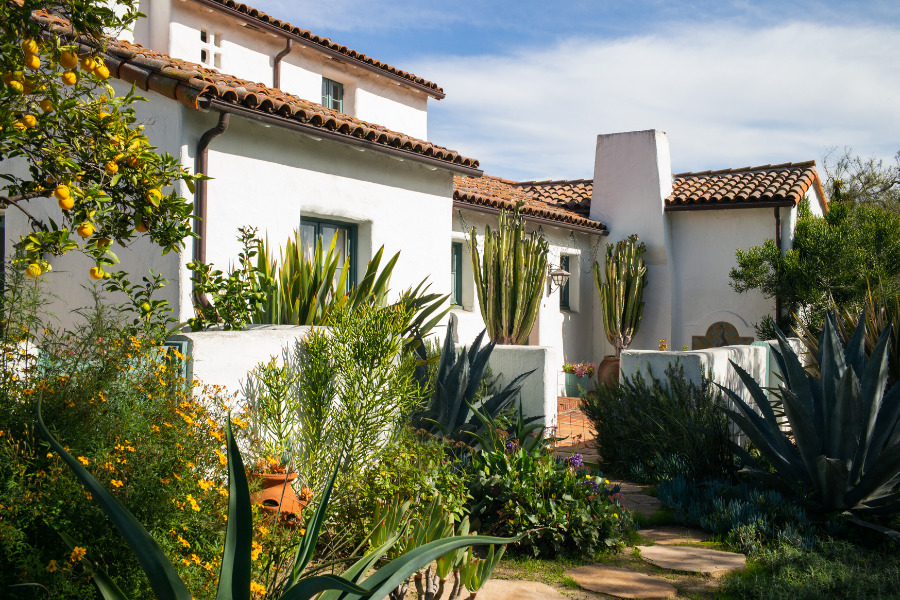
Native plant landscapes are an excellent alternative to traditional grass lawns, as they are well-adapted to local climate conditions and support the region’s biodiversity. Incorporate native plants into your landscape for a low-maintenance, water-efficient space. This ecologically beneficial design promotes a healthy ecosystem in your outdoor area. In this section, we will discuss the advantages of using native plants in your landscape, how to select appropriate species, and tips for designing a successful native plant landscape.
Adaptability to Conditions
One of the primary advantages of using native plants in your landscape is their adaptability to local conditions. Native plants have evolved in your region, making them well-suited to the area’s climate. They also adapt to local soil types and precipitation patterns. This means they often require less water, fertilizer, and pest control measures compared to non-native species. As a result, native plant landscapes can save homeowners time, money, and resources while also contributing to water conservation efforts.
Attracting Beneficial Wildlife
In addition to their environmental benefits, native plants can also create a visually appealing landscape that attracts a diverse array of wildlife. Native plant landscapes provide habitat and food for pollinators, birds, and local fauna. This contributes to a healthier ecosystem and enhances the enjoyment of your outdoor space. Moreover, incorporating native plants into your landscape design can add unique textures, colors, and forms that set your yard apart from the typical grass lawn.
Find Native Plant Species
To create a native plant landscape, begin by researching the plant species native to your region. Local nurseries, botanical gardens, and native plant societies can be valuable resources in identifying suitable species for your area. Consider factors like sun exposure, soil type, and water requirements when selecting plants. Also, take into account the plant’s size, growth habit, and aesthetic appeal. This will help ensure that the plants you choose will thrive in your landscape and create the desired visual effect.
Planning your Native Plant Landscape
Designing a successful native plant landscape involves more than simply swapping out grass for native species. Thoughtful planning is key to creating a cohesive, visually appealing space that meets your needs and preferences. In your landscape design, incorporate a mix of trees, shrubs, perennials, and ground covers. This creates layers of interest and provides habitat for wildlife. Additionally, group plants with similar water, sun, and soil requirements together to create a more efficient and low-maintenance landscape.
Native plant landscapes offer a sustainable, low-maintenance, and visually appealing alternative to traditional grass lawns. By selecting regionally appropriate species and thoughtfully designing your landscape, you can create an outdoor space that supports local biodiversity, conserves resources, and provides year-round interest and enjoyment.
Ornamental Grasses
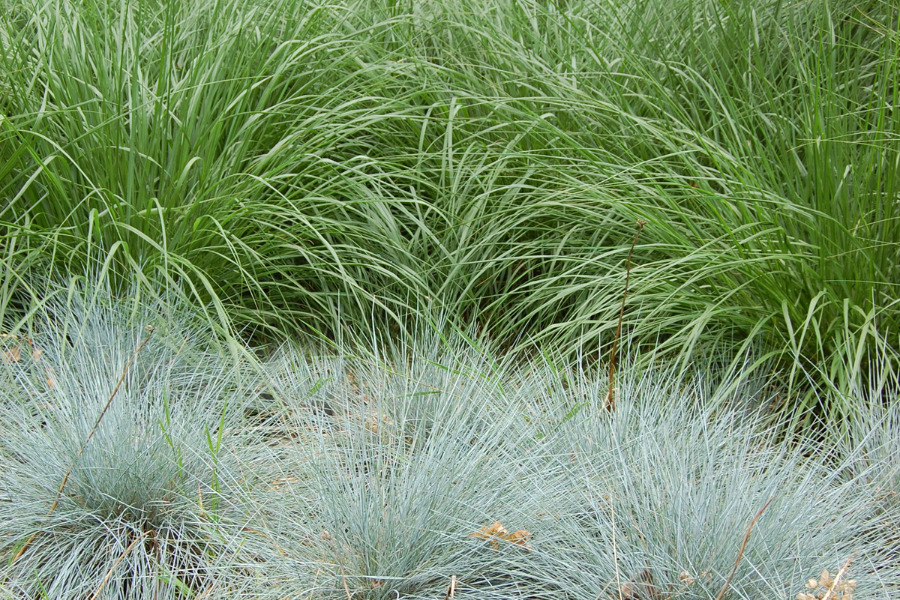
Ornamental grasses are another attractive and eco-friendly alternative to traditional lawns. These versatile plants provide various textures, colors, and heights. They’re ideal for adding visual interest and movement to your landscape. Unlike traditional turf grasses, which often require frequent watering and mowing, ornamental grasses are generally low-maintenance and more drought-tolerant.
There is an ornamental grass to suit almost every garden style and climate. Some popular options include fountain grass (Pennisetum), switchgrass (Panicum), and feather reed grass (Calamagrostis), all of which come in a variety of species and cultivars. Consider mature size, growth habit, and care requirements when selecting ornamental grasses. Sunlight, water, and soil preferences are also important factors.
In addition to their aesthetic appeal, ornamental grasses offer several practical benefits. Many species provide erosion control, which is especially useful on sloped areas where traditional lawns may struggle to take hold. They provide privacy and act as barriers when planted in clusters or along property lines. Furthermore, ornamental grasses often serve as a habitat for beneficial insects and wildlife, promoting biodiversity within your garden.
To maintain the beauty and health of your ornamental grasses, occasional care is needed. Some species need yearly pruning in late winter or early spring. Others benefit from division every few years for healthy growth. Overall, however, ornamental grasses are a low-maintenance and visually appealing alternative to traditional lawns that can enhance the sustainability and beauty of your outdoor space.
Creating a Wildlife Habitat
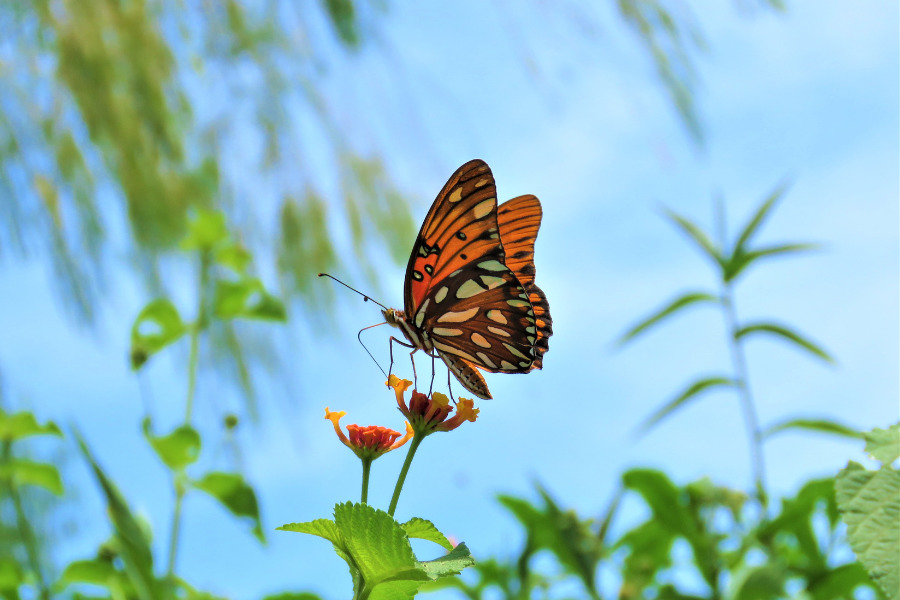
Creating a wildlife habitat in place of a traditional lawn not only contributes to a healthier environment but also adds beauty and interest to your outdoor space. By incorporating native plants, providing water sources, and creating shelter, you can attract a diverse array of birds, insects, and other wildlife, turning your yard into a thriving ecosystem.
Native Plants are Essential
Native plants are a key element in establishing a wildlife habitat, as they have evolved alongside local fauna and are well-suited to the climate and soil conditions. These plants often require less water and care than non-native species, making them more sustainable and easier to maintain. Additionally, native plants provide essential food sources for pollinators, such as bees, butterflies, and hummingbirds, which in turn help to pollinate other plants in your garden.
Water Sources for Wildlife
Providing water sources is another important aspect of creating a wildlife-friendly space. A birdbath, pond, or shallow dish filled with water can be valuable. They serve as resources for birds, insects, and other animals. Ensure that the water source is kept clean and filled, and consider adding a heater in colder months to prevent the water from freezing. To further enhance the habitat, add features like birdhouses, bee hotels, or brush piles to provide shelter and nesting sites for various species.
Supporting the Local Ecosystem
By creating a wildlife habitat in your yard, you not only support the local ecosystem but also benefit from the countless hours of enjoyment that come from observing the diverse array of creatures that make your garden their home. This alternative to traditional lawns is not only eco-friendly but also provides an opportunity to deepen your connection with nature and foster a sense of environmental stewardship.

Embracing Alternatives
Embracing alternatives to traditional grass lawns offers a multitude of benefits for both homeowners and the environment. By exploring various options such as ground covers, artificial grass, xeriscaping, native plant landscapes, ornamental grasses, and wildlife habitats, you can create a unique, sustainable, and visually appealing outdoor space that aligns with your values and lifestyle.
Each of these alternatives brings its own set of advantages and challenges, but all contribute to a more eco-friendly approach to landscaping. By reducing water usage, limiting chemical treatments, and promoting biodiversity, these lawn alternatives help to conserve natural resources, protect the environment, and support the overall health of our planet. Making the shift towards sustainable landscaping practices is a responsible choice for homeowners. It’s also an opportunity to create a beautiful, low-maintenance, and functional outdoor living area.
The trend of moving away from traditional grass lawns and towards more sustainable landscaping options is a positive step towards a greener future. Whether you choose one or a combination of these alternatives, you’ll be contributing to a healthier planet while enjoying the unique beauty and character that these options bring to your outdoor space. Explore the possibilities and discover how these lawn alternatives can transform your yard into an eco-friendly oasis.


